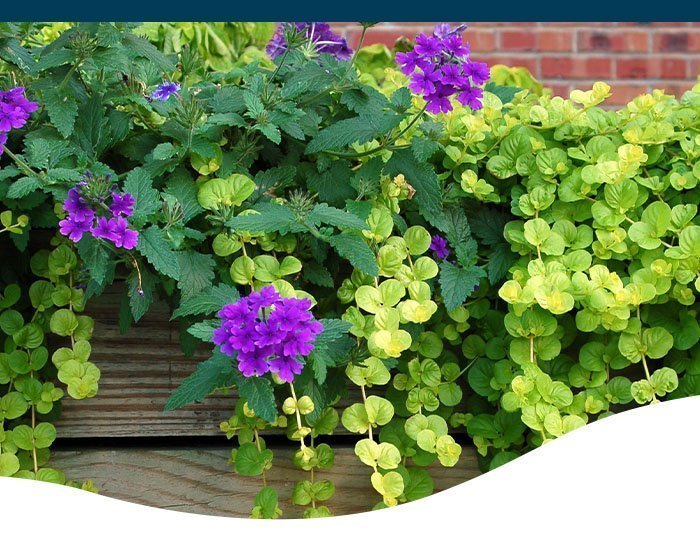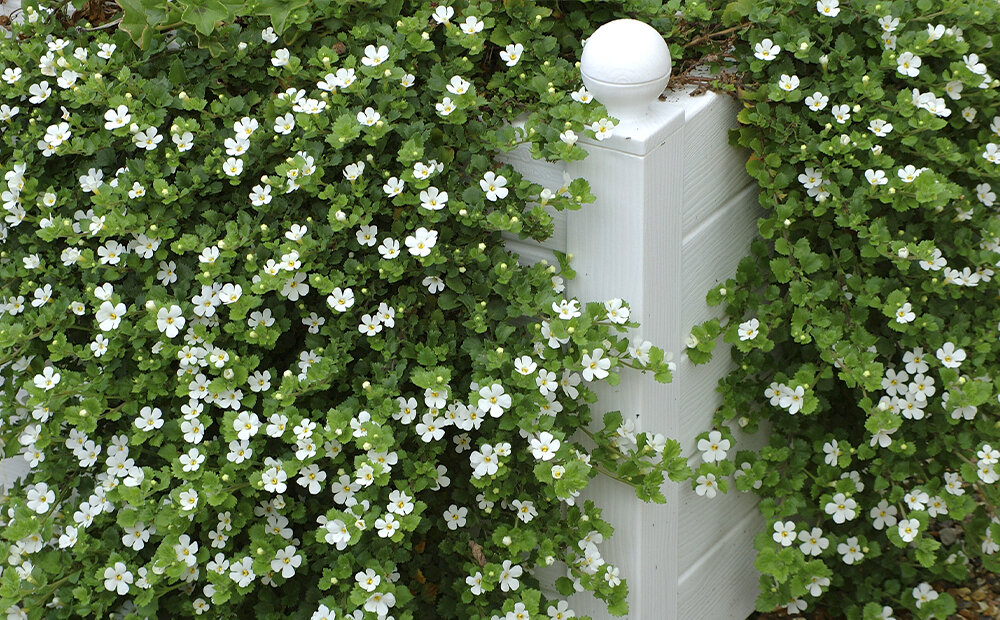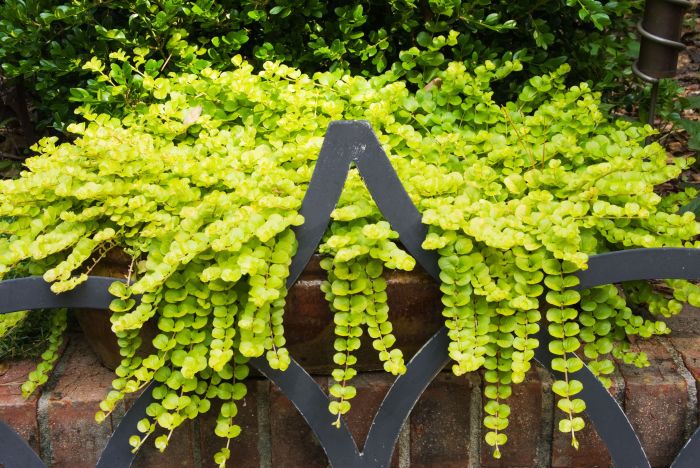Good trailing plants have taken center stage in the world of home decor, offering a unique blend of aesthetic appeal and air-purifying qualities. These versatile plants can transform any space, adding a touch of greenery and creating a sense of tranquility.
From lush ferns to cascading succulents, there is a wide range of trailing plant varieties to choose from, each with its own distinctive characteristics and charm.
Trailing Plant Benefits
Trailing plants are a versatile addition to any indoor or outdoor space, offering a range of aesthetic and practical benefits. Their cascading foliage adds visual interest and texture, while their ability to purify the air makes them a healthy choice for homes and offices.
Good trailing plants add a touch of elegance and charm to any indoor space. Among the popular choices are flowering hanging house plants, such as fu fuchsias , begonias, and petunias, which cascade beautifully from hanging baskets or shelves. These plants not only provide a vibrant splash of color but also purify the air, making them a perfect addition to any home.
Indoor Benefits
In indoor settings, trailing plants create a sense of lushness and tranquility. They can be used to soften hard edges, add color to dull corners, and create a more inviting atmosphere. Their ability to remove toxins from the air also helps to improve indoor air quality, making them an ideal choice for bedrooms, living rooms, and offices.
Outdoor Benefits
Outdoors, trailing plants can be used to create a variety of effects. They can be used to soften the edges of patios and decks, add a touch of color to garden walls, or create a lush groundcover. Their ability to tolerate a variety of light conditions makes them suitable for a wide range of outdoor spaces.
Examples, Good trailing plants
Some popular trailing plants for indoor use include:
- English ivy (Hedera helix)
- Golden pothos (Epipremnum aureum)
- Spider plant (Chlorophytum comosum)
Some popular trailing plants for outdoor use include:
- Creeping Jenny (Lysimachia nummularia)
- Vinca minor
- Lamium maculatum
Popular Trailing Plant Varieties: Good Trailing Plants

Trailing plants are a diverse group of species, each with unique characteristics and visual appeal. From cascading foliage to vibrant blooms, these plants add a touch of elegance and charm to any indoor or outdoor space. Here are some of the most common and popular trailing plant varieties:
English Ivy
* Botanical Name: Hedera helix
Common Names
English ivy, common ivy
Distinctive Characteristics
Trailing plants can add a touch of elegance to any room, and they’re especially well-suited for hanging baskets. If you’re looking for a plant that will fill your home with a beautiful fragrance, consider one of the many fragrant indoor hanging plants available.
These plants not only look great, but they can also help to improve your mood and reduce stress. And, of course, they’re a great way to add a touch of nature to your home.
English ivy is a vigorous vine with evergreen leaves that come in various shapes and sizes. Its foliage can be variegated, with shades of green, white, and yellow. English ivy is known for its ability to climb and cling to surfaces, making it a popular choice for ground covers and trellises.
Pothos
* Botanical Name: Epipremnum aureum
Common Names
Pothos, golden pothos, devil’s ivy
Distinctive Characteristics
Pothos is a fast-growing vine with heart-shaped leaves that are typically variegated in shades of green, yellow, and white. It is a popular indoor plant due to its low maintenance requirements and ability to tolerate low light conditions. Pothos is often grown in hanging baskets or as a trailing plant on shelves.
Spider Plant
* Botanical Name: Chlorophytum comosum
Common Names
Spider plant, airplane plant
Distinctive Characteristics
Spider plants are known for their long, arching leaves that produce small plantlets, or “spiderettes,” at the ends of their stems. These plantlets can be propagated to create new plants. Spider plants are easy to care for and are tolerant of a wide range of light conditions.
They are often used as hanging plants or as a ground cover in outdoor gardens.
String of Hearts
* Botanical Name: Ceropegia woodii
Common Names
String of hearts, rosary vine
Distinctive Characteristics
String of hearts is a trailing succulent with heart-shaped leaves that are connected by thin stems. The leaves are typically variegated in shades of green and purple. String of hearts is a popular choice for hanging baskets or as a trailing plant on shelves.
It requires bright, indirect light and well-draining soil.
Creeping Jenny
* Botanical Name: Lysimachia nummularia
Common Names
Creeping Jenny, moneywort
Good trailing plants are an excellent way to add a touch of greenery to your home. They can be used to create a lush, cascading effect or to simply add a pop of color to a room. If you’re looking for the easiest hanging houseplants to care for, be sure to check out our guide to the easiest hanging houseplants . These plants are all relatively low-maintenance and can tolerate a variety of conditions, making them a great choice for beginners.
With a little care, your trailing plants will thrive and add beauty to your home for years to come.
Distinctive Characteristics
Creeping Jenny is a low-growing groundcover with round, green leaves. It produces small yellow flowers in the spring. Creeping Jenny is known for its ability to spread quickly, making it a popular choice for covering large areas. It is often used in rock gardens, as a ground cover under trees, or as a trailing plant in hanging baskets.
Trailing Plant Care Guide
Cultivating trailing plants is a rewarding experience, bringing a cascade of verdure to any indoor or outdoor space. To ensure their optimal growth and longevity, it is crucial to provide them with the appropriate care and maintenance.
Understanding their specific needs for light, water, temperature, soil, and fertilization will help you create a thriving environment for your trailing plants.
Light Requirements
Most trailing plants prefer bright, indirect light. Avoid exposing them to direct sunlight, as this can scorch their leaves. If you notice brown or yellowing leaves, it could be a sign of excessive sunlight.
Watering Schedule
Trailing plants generally prefer moist soil but not soggy conditions. Allow the top inch of soil to dry out between waterings. Overwatering can lead to root rot and other issues.
Temperature Preferences
Most trailing plants thrive in warm temperatures between 60-75°F (15-24°C). Avoid exposing them to cold drafts or sudden temperature changes.
Soil Selection and Fertilization
Choose a well-draining potting mix specifically designed for container plants. Fertilize your trailing plants monthly during the growing season with a balanced liquid fertilizer.
Pruning and Propagation
Regular pruning helps maintain the desired shape and encourages new growth. Cut back leggy or damaged stems as needed. Trailing plants can be easily propagated through stem cuttings.
Trailing Plant Design Ideas
Trailing plants are not only easy to care for, but they also offer a versatile way to add greenery and life to any home. Their cascading stems and lush foliage make them ideal for hanging baskets, window boxes, and vertical gardens.
When incorporating trailing plants into your home decor, there are endless creative possibilities. Here are a few ideas to get you started:
Hanging Baskets
Hanging baskets are a classic way to display trailing plants. They can be hung from the ceiling, a wall, or even a tree branch. Choose a basket that complements the style of your home and the plant you choose. For example, a wicker basket would look great with a trailing fern, while a metal basket would be perfect for a trailing succulent.
Window Boxes
Window boxes are another great way to add greenery to your home. They can be placed on a windowsill, balcony, or porch. When choosing plants for window boxes, be sure to select varieties that are tolerant of the amount of sunlight your window receives.
Some good options for window boxes include trailing petunias, trailing lobelia, and trailing nasturtiums.
Vertical Gardens
Vertical gardens are a great way to add greenery to small spaces. They can be created on a wall, fence, or even a trellis. When creating a vertical garden, be sure to choose plants that are suitable for the amount of sunlight the area receives.
Some good options for vertical gardens include trailing ivy, trailing pothos, and trailing spider plants.
No matter how you choose to display them, trailing plants are a beautiful and easy way to add life to your home.
Trailing Plant Health Issues

Trailing plants, with their cascading foliage and graceful presence, can enhance any indoor or outdoor space. However, like all plants, they are susceptible to certain pests and diseases that can compromise their health and aesthetic appeal. Understanding these potential threats and adopting preventive measures is crucial for maintaining the vitality and beauty of trailing plants.Common
pests that may infest trailing plants include aphids, mealybugs, spider mites, and whiteflies. Aphids are small, pear-shaped insects that feed on plant sap, causing stunted growth and yellowing leaves. Mealybugs appear as white, cottony masses on stems and leaves, while spider mites spin fine webs on the undersides of leaves, leading to stippling and yellowing.
Whiteflies are tiny, white insects that can transmit viral diseases to plants.Fungal diseases, such as powdery mildew and botrytis, can also affect trailing plants. Powdery mildew manifests as a white, powdery substance on leaves, while botrytis causes soft, brown rot on stems, leaves, and flowers.
These diseases thrive in humid conditions and can spread rapidly, damaging plant tissue and reducing growth.To prevent pest and disease problems, regular inspection and proper cultural practices are essential. Inspect plants frequently for signs of infestation or disease. Ensure adequate ventilation and avoid overcrowding to reduce humidity levels.
Use clean gardening tools and isolate infected plants to prevent the spread of disease.If pests or diseases are detected, prompt treatment is necessary. Insecticidal soap, neem oil, or horticultural oil can be effective in controlling pests. For fungal diseases, fungicides containing sulfur or copper can be applied.
Follow the manufacturer’s instructions carefully when using any chemical treatments.Maintaining healthy trailing plants involves providing optimal growing conditions, such as well-drained soil, sufficient sunlight or shade, and appropriate watering. Regular fertilization and mulching can enhance plant growth and resilience. By implementing preventive measures and promptly addressing health issues, you can enjoy the beauty and benefits of trailing plants for years to come.
Final Thoughts

Whether you’re looking to add a touch of elegance to your living room or create a vibrant outdoor oasis, good trailing plants offer endless possibilities. With proper care and attention, these plants will thrive and bring joy to your home for years to come.
Answers to Common Questions
What are the benefits of having trailing plants?
Trailing plants offer numerous benefits, including improving air quality, reducing stress levels, and adding a touch of beauty to any space.
What are some popular trailing plant varieties?
Some popular trailing plant varieties include pothos, philodendron, ivy, and spider plants.
How do I care for trailing plants?
Trailing plants generally prefer bright, indirect light, well-drained soil, and regular watering.